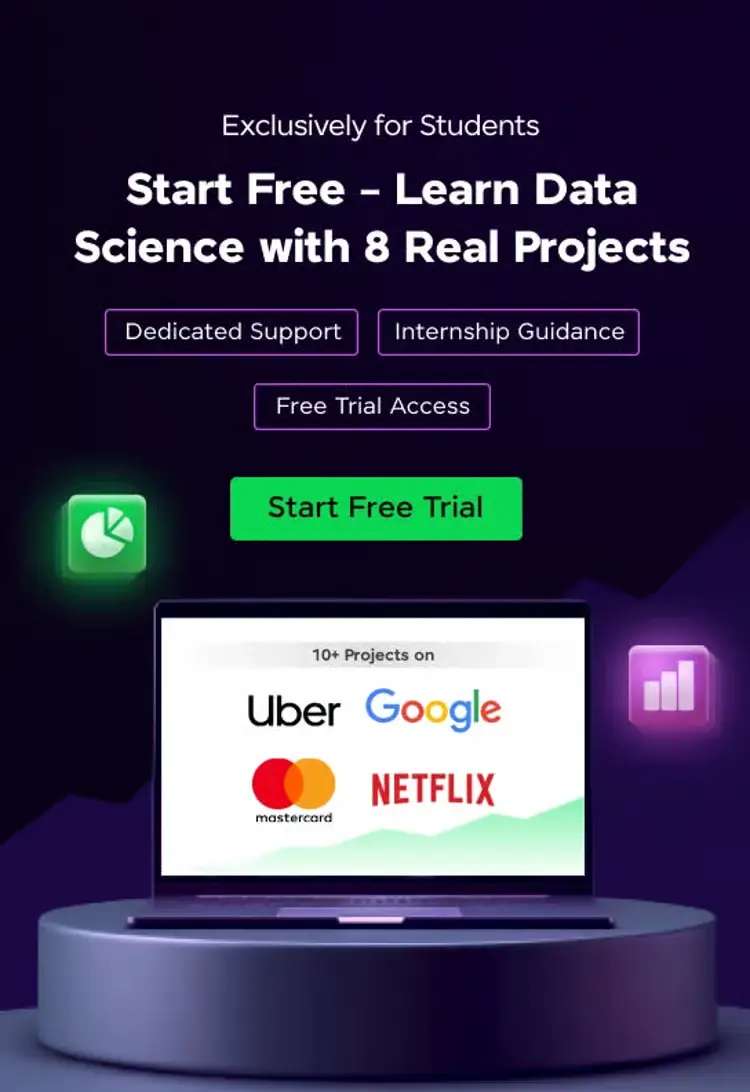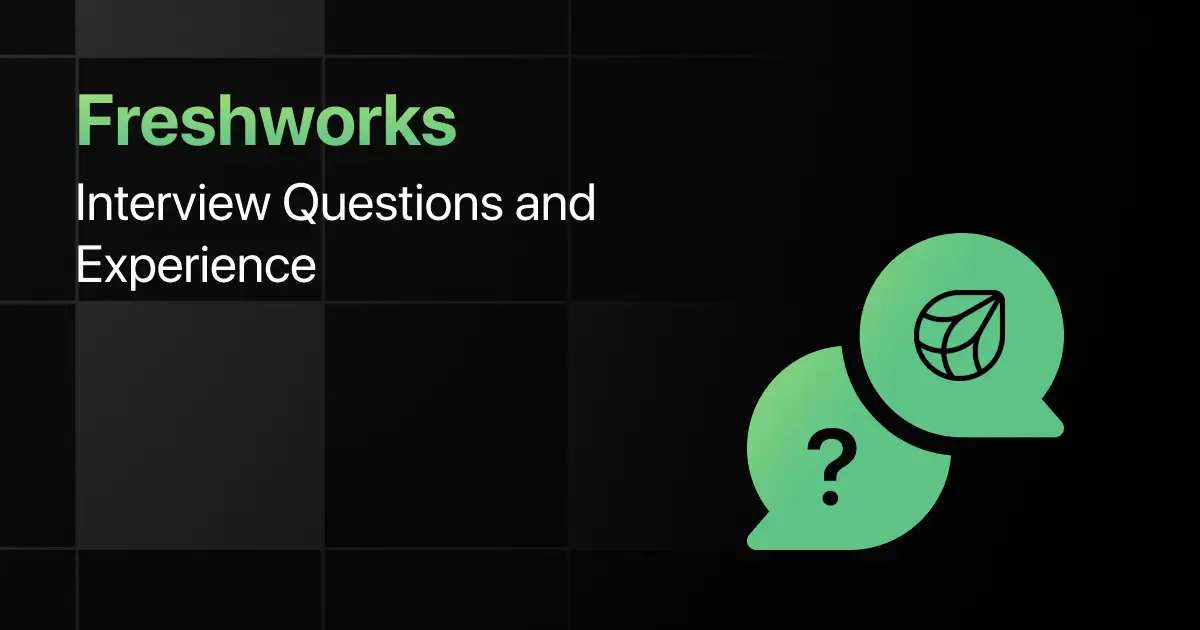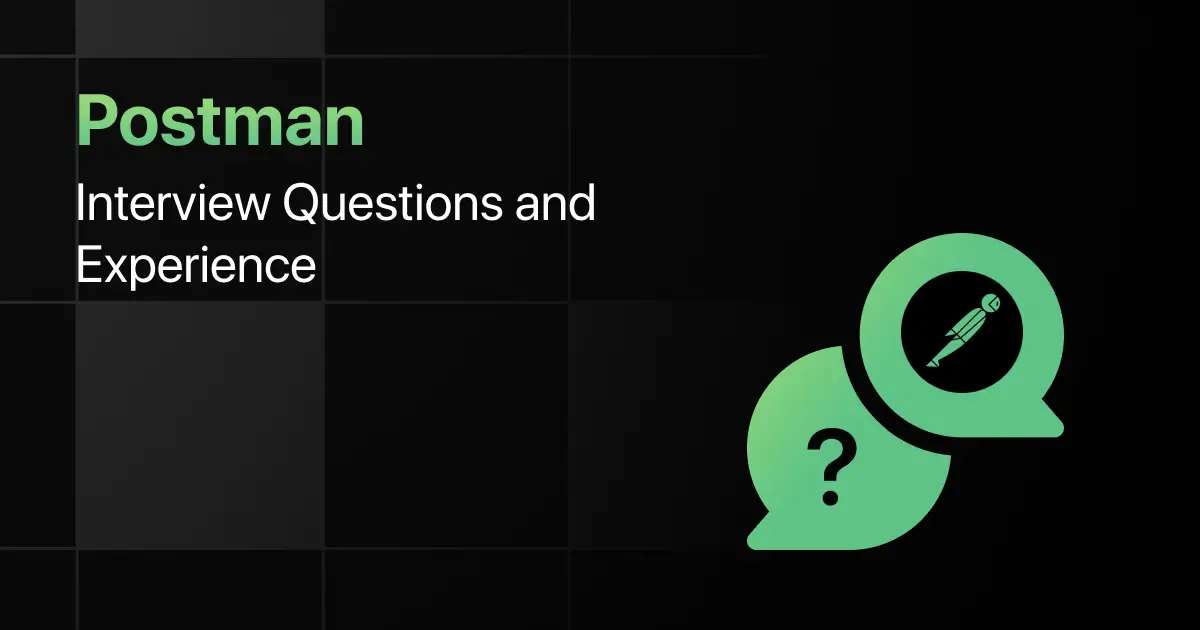Swiggy Interview Questions and Experience
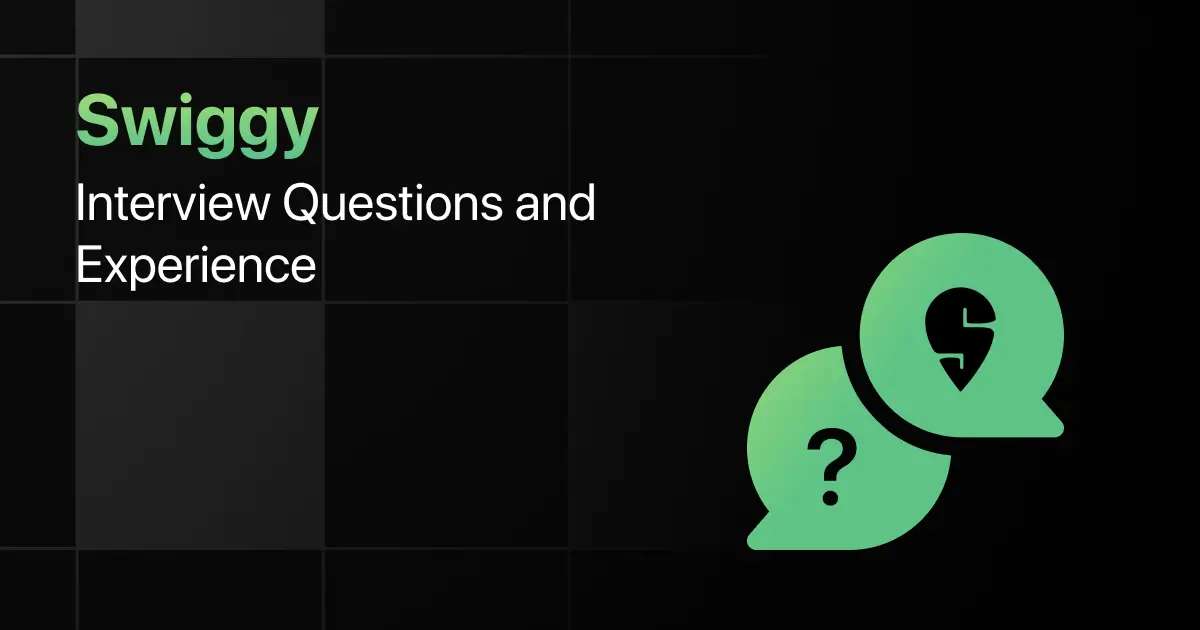
Have you ever wondered what it takes to land a job at Swiggy, one of India’s biggest food-tech companies? With its rapid expansion and tech-driven operations, Swiggy has become a dream workplace for many freshers and experienced professionals.
From building scalable delivery systems to creating seamless customer experiences, Swiggy’s interview process is designed to test not just technical knowledge but also problem-solving and adaptability. Candidates are evaluated on coding, real-world scenarios, and cultural fit.
In this blog, we’ll walk you through the Swiggy hiring process, top interview questions, real candidate experiences, preparation tips, and FAQs to help you crack your upcoming interviews.
Swiggy Hiring Process – Overview
Here’s a quick overview of Swiggy’s hiring process:
| Category | Details |
|---|---|
| Eligibility | Open to both freshers and experienced candidates. Preferred degrees include B.E/B.Tech, M.Tech, MCA, or equivalent in Computer Science, IT, or related fields. |
| Rounds | Typically 3–5 rounds, including Online Assessment (OA), Technical Interviews (DSA, System Design, Domain Knowledge), Managerial/Behavioral Interview, and HR Round. |
| Job Roles Offered | Software Development Engineer (SDE-1, SDE-2), Data Analyst, Product Manager, Backend Engineer, Mobile Developer, and Operations/Business Analyst roles. |
| Salary Range | Freshers: ₹8 – 12 LPA (SDE/Analyst roles); Experienced: ₹18 – 35 LPA depending on role and seniority (based on Glassdoor & AmbitionBox). |
| Apply Link | Apply Now |
Top Swiggy Interview Questions with Answers
Preparing for an interview at Swiggy means focusing on both technical and behavioral aspects, as well as role-specific skills. Below are some of the commonly asked interview questions with sample answers to help you get a clear idea of what to expect.
1. Technical Questions
- What is the difference between SQL and NoSQL databases?
SQL databases are relational, structured, and use predefined schemas, while NoSQL databases are flexible, unstructured, and ideal for handling large-scale distributed data. - Explain normalization and why it is used in databases.
Normalization is the process of structuring data to reduce redundancy and improve efficiency. It ensures data consistency and better query performance. - What is the difference between multithreading and multiprocessing?
Multithreading allows multiple threads within a single process to run concurrently, while multiprocessing involves running multiple processes, each with its own memory space. - How does caching improve system performance?
Caching stores frequently accessed data in memory, reducing the need for repeated database calls, which improves speed and scalability. - Explain CAP theorem in distributed systems.
The CAP theorem states that a distributed system can provide only two of the following three: Consistency, Availability, and Partition Tolerance. - What is the difference between REST and GraphQL APIs?
REST uses multiple endpoints and predefined structures, while GraphQL uses a single endpoint and allows clients to fetch only the required data. - What are indexes in databases, and why are they important?
Indexes speed up data retrieval by creating references to table rows, but they can slow down insert/update operations due to additional overhead. - What is the difference between TCP and UDP?
TCP is connection-oriented and reliable, ensuring data delivery, while UDP is connectionless, faster, and used in real-time applications like video streaming. - Explain the difference between monolithic and microservices architecture.
A monolithic architecture has all components in one application, while microservices split functionalities into independent services for better scalability and flexibility. - What are load balancers, and how do they work?
Load balancers distribute incoming network traffic across multiple servers to ensure high availability, reliability, and optimized performance. - How do you ensure security in web applications?
By implementing HTTPS, input validation, encryption, authentication (OAuth, JWT), and preventing vulnerabilities like SQL Injection and XSS. - What is the difference between Docker and Kubernetes?
Docker is a containerization tool, while Kubernetes is an orchestration platform that manages and scales multiple containers efficiently. - What are ACID properties in databases?
ACID ensures reliability: Atomicity (all or nothing), Consistency (valid state), Isolation (independent transactions), and Durability (permanent changes). - Explain the difference between horizontal and vertical scaling.
Horizontal scaling adds more servers, while vertical scaling increases resources (CPU/RAM) in the existing server. - How does a CDN (Content Delivery Network) improve application performance?
A CDN caches content in multiple geographical locations, reducing latency and improving loading speed for users worldwide.
2. Role-Based Questions
Software Development Engineer (SDE)
- How would you design a scalable food ordering system for Swiggy?
I would use microservices for order, delivery, and payments; implement load balancing; and use caching for frequently accessed data. - How do you handle high-traffic scenarios in backend systems?
By using database sharding, load balancers, message queues (Kafka/RabbitMQ), and auto-scaling in cloud environments. - How would you ensure real-time tracking of food orders?
Using WebSockets or MQTT for real-time updates, integrated with GPS services to provide continuous tracking. - Explain your approach to debugging a production-level system issue.
Start by analyzing logs, reproducing the issue in a test environment, isolating the faulty module, applying fixes, and monitoring after deployment.
Data Analyst
- How would you analyze delivery time delays at Swiggy?
I would use SQL queries and visualization tools to find bottlenecks in city, traffic, or restaurant preparation times. - How do you handle missing or inconsistent data in analysis?
By applying imputation techniques, removing outliers, or normalizing values, depending on the data context. - What KPIs would you track for Swiggy’s customer satisfaction?
Delivery time, order accuracy, app ratings, repeat order percentage, and customer support resolution time. - Explain how A/B testing could be applied at Swiggy.
We can test changes like new UI features or promotional offers by splitting users into groups and measuring conversion rates.
Product Manager
- How would you prioritize features for Swiggy’s mobile app?
I would consider user impact, business value, technical feasibility, and align with company goals using frameworks like RICE or MoSCoW. - How would you handle negative customer feedback after launching a new feature?
I’d analyze the feedback, identify pain points, roll back if necessary, and quickly release an improved version. - How would you improve Swiggy’s customer retention?
By enhancing loyalty programs, personalizing recommendations, reducing delivery time, and offering better customer support. - What metrics would you track to measure the success of a new feature?
Adoption rate, engagement, churn reduction, customer satisfaction scores, and revenue impact.
Operations/Business Analyst
- How would you improve efficiency in Swiggy’s delivery network?
By analyzing rider allocation, reducing idle time, and optimizing route planning using ML-based predictive models. - How would you identify high-demand zones in a city?
By analyzing historical order data, traffic trends, and using heatmaps to visualize demand density. - What challenges do you foresee in scaling Swiggy’s delivery system?
Challenges include traffic congestion, unpredictable demand spikes, and ensuring consistent food quality across locations. - How would you balance delivery partner incentives with company profitability?
By designing a tier-based incentive structure that rewards performance while controlling operational costs.
3. Behavioral Questions
- Tell me about a time you worked in a high-pressure environment. How did you handle it?
During my internship, I faced urgent deadlines. I broke tasks into smaller milestones, prioritized effectively, and ensured timely delivery. - How do you handle disagreements with a team member?
I listen to their perspective, present data to support my view, and work towards a mutually acceptable solution. - Describe a time when you showed leadership in a team project.
I led a 4-member group during a hackathon, assigning tasks based on strengths and ensuring we completed the project within the deadline. - What motivates you to work at a company like Swiggy?
The impact of solving real-world challenges at scale and contributing to a product used by millions excites me. - How do you handle feedback or criticism?
I take feedback as an opportunity to learn, analyze where I can improve, and implement changes in future tasks. - Tell me about a failure you faced and what you learned from it.
I once underestimated the complexity of a project and missed the timeline. It taught me the importance of planning and realistic estimates. - How do you ensure effective communication in a team project?
By setting clear expectations, giving regular updates, and using collaborative tools like Slack or Jira to track progress. - Why should Swiggy hire you?
Because I bring strong problem-solving skills, adaptability, and a customer-first mindset that aligns with Swiggy’s mission.
Swiggy Interview Experiences
1. Swiggy SDE-1 (Backend) role Interview Experience (Fresher)
Here is the interview experience of a candidate who appeared for the Swiggy SDE-1 (Backend) role through an off-campus drive in 2021.
Candidate Background:
The candidate had a B.Tech degree with 6 months of internship experience at Quantiphi and 4 months of full-time experience as a Framework Engineer.
Interview Process They Faced:
The process included 4 rounds — an online assessment on HackerRank, a machine coding round, a DS/Algo round, and a hiring manager interview.
Questions Asked:
- The online test included 3 coding problems of varying difficulty.
- Machine coding round: Designed and implemented a Snake and Ladder Game with OOPs concepts and handled optional extensions.
- DSA round: Catalan number for counting BSTs, Lowest Common Ancestor in a Binary Tree, and Gas Station problem optimization.
- Hiring Manager round: Questions on internship experience, projects, SDLC (Agile), and motivations for switching roles.
Outcome & Difficulty Level:
The candidate cleared all rounds and was selected. They described the process as challenging but well-structured, with problem-solving and design skills being crucial.
2. Swiggy SDE-1 Interview Experience (Experienced)
Here is the interview experience of Abhishek Kumar, who appeared for the Swiggy SDE-1 (Backend) role as an experienced candidate.
Candidate Background:
The candidate was a new graduate with 1.5 years of internship experience at startups. Coming from a Tier-3 college, they had no IIT/NIT background.
Interview Process They Faced:
The process involved an online coding assessment, followed by three rounds — problem-solving with DSA, a machine coding round, and a hiring manager interview.
Questions Asked:
- Online assessment: 3 coding questions (solved 2 medium-level and partially attempted 1 hard).
- Technical round: Maximum Length of Pair Chain and Longest Valid Parentheses substring problem.
- Machine coding round: Designed a Splitwise application with 5 key features, including trade-off discussions and scaling considerations.
- Hiring Manager round: Questions on projects, freelancing, hackathons, resume details, career goals, and system-level discussion on Swiggy’s scale.
Outcome & Difficulty Level:
The candidate received an offer after smooth interviews and discussions with HR, though they eventually declined it due to competing offers. The difficulty level was moderate to high, especially in the design round.
Preparation Tips for Swiggy Interviews
Cracking a Swiggy interview requires a mix of technical expertise, role-specific preparation, and strong communication skills. Below are some tips to help you get ready.
- Know the Basics: Revise core computer science concepts like DBMS, OOPs, networking, and system design. These often form the foundation of technical rounds.
- Practice Problem-Solving: Focus on data structures, algorithms, and real-world scenarios. Solve medium-level questions on platforms to build confidence.
- Understand the Business: Swiggy operates in a fast-paced delivery ecosystem. Be prepared to answer questions related to scalability, operations, and customer experience.
- Review Your Projects: Expect deep dives into your past work. Be ready to explain your contributions, technologies used, and the challenges you solved.
- Improve Communication: Clear articulation of thought process is as important as coding. Practice explaining your approach while solving problems.
- Prepare for Behavioral Questions: Have stories ready in STAR format (Situation, Task, Action, Result) to showcase teamwork, leadership, and conflict resolution skills.
- Ask Questions Back: Engage with interviewers by asking about Swiggy’s culture, projects, or future plans. It shows genuine interest and enthusiasm.
Final Words
Swiggy interviews are designed to test not just your technical abilities but also your adaptability and problem-solving approach. With the right preparation, confidence, and clarity in communication, you can stand out and land your dream role at Swiggy.
Explore More for
- Amazon
- Salesforce
- Oracle
- Microsoft
- IBM
- Adobe
- Flipkart
- Apple
- Uber
- Meesho
- Zomato
- Phonepe
- Zoho
- Postman
- Freshworks
- Paytm
- Darwinbox
FAQs
Swiggy commonly asks about DSA, system design, SQL, past projects, scalability scenarios, business knowledge, and behavioral problem-solving questions.
For freshers, Swiggy interview questions are moderately tough, focusing on DSA, core CS concepts, and communication skills rather than advanced system design.
The Swiggy interview process typically spans 2–4 weeks, depending on the number of rounds, panel availability, and role-specific requirements.
Candidates should focus on DSA, SQL, OOPs, system design basics, and backend technologies relevant to the role like Java, Python, or Node.js.
Common mistakes include not explaining thought processes, skipping edge cases, lacking clarity about projects, and weak understanding of scalability or business-related questions.
The Swiggy interview process usually has 3–5 rounds, including online assessment, technical rounds, managerial discussions, and final HR/culture fit interviews.
Yes, freshers face DSA and fundamentals-focused questions, while experienced candidates are tested on system design, domain knowledge, and leadership responsibilities.
The best way to prepare for Swiggy interviews is consistent DSA practice, system design study, and using resources like PlacementPreparation.io.
Related Posts
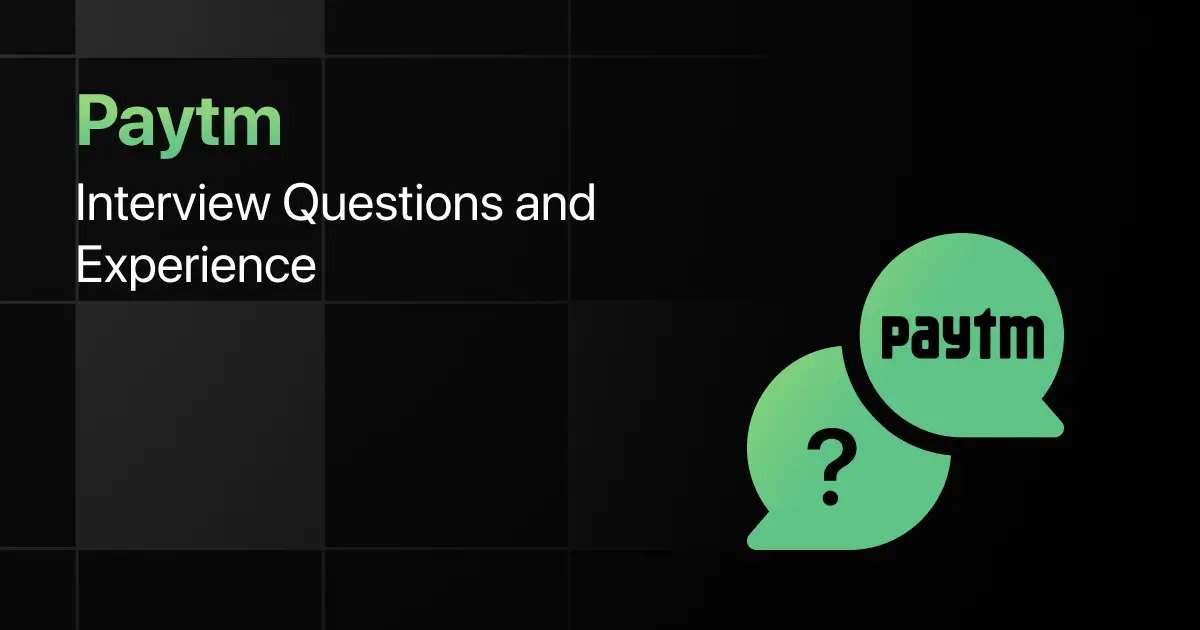

Paytm Interview Questions and Experience
Preparing for a Paytm interview requires a clear understanding of the company’s hiring process, the type of questions asked, and …
Warning: Undefined variable $post_id in /var/www/wordpress/wp-content/themes/placementpreparation/template-parts/popup-zenlite.php on line 1050


